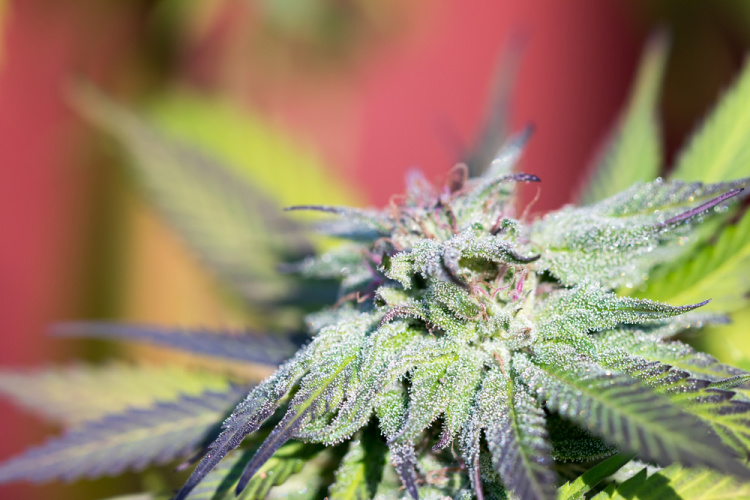What is the Endocannabinoid System (ECS)?
The Endocannabinoid System (ECS) is a complex signaling system found within the human body. The ECS was first identified in the early 1990s by researchers exploring how THC exerts its effects, so it is a relatively new concept to the medical and scientific communities.
The ECS is active in a wide array of bodily functions, which is why we are able to treat such a broad mix of medical conditions using cannabinoids. The ECS plays a role in promoting health and balance by controlling some of the following functions and processes:
- Sleep
- Mood
- Appetite
- Memory
- Reproduction and fertility
- Immune responses
- Bone reorganization
- Pain perception
- Inflammatory responses
What makes up the Endocannabinoid System?
Endogenous Cannabinoids (cannabinoids created by the human body):
- Anandamide (Bliss Molecule):
- Interacts primarily with the CB1 Receptors in the central nervous system
- First described by Raphael Mechoulam and Lumir Hanus about 30 years ago
- Impacts a host of physiological functions including appetite stimulation, mood fluctuation, pain management, and fertility
- 2-ArachidonoylGlycerol (2-AG):
- 2-AG is a full CB1 and CB2 receptor agonist so it is effective in the central nervous system and in immunologic tissues
- First described about 25 years ago by Raphael Mechoulam and Shimon Ben-Shabat
- Is thought to be beneficial in pain relief, appetite stimulation, and relief from nausea
Phytocannabinoids (cannabinoids created in nature, by plants)
Phytocannabinoids are related to endocannabinoids because they engage with the same receptors and have similar effects as endocannabinoids.
A parallel example would be endorphin and morphine: endorphin is made by the body and morphine is made by a plant, but they have similar effects in the body.
Cannabinoid Receptors are a class of cell membrane receptors in the G-Protein Family. Think of cannabinoids as the “key” and cannabinoid receptors as “the lock”.
Cannabinoid receptors include:
- CB1 : Mostly found in the central nervous system (brain and spinal cord)
-
- Their activation is associated with cerebral, behavioral, and psychoactive effects
- Play direct roles in memory and cognition, motor control, appetite stimulation and perception of pain, and sleepiness
- THC has a natural affinity for CB1
- CB2 : Primarily found in the peripheral nervous system
- Associated with the immune system and inflammatory response.
- Stimulation/activation doesn’t result in heady euphoria or intoxication
- Activating CB2 can assist with muscle relaxation, reduction in anxiety, the body repairing itself, and reduction in the sensation of pain without the mental impairment associated with THC
Secondary ECS Receptors:
Non-CB1/CB2 GPR Coupled Receptors (GPR or CPCR): GPRs are a large group of proteins that have cell surface receptors that detect molecules outside the cell and activate cellular responses.
GPR receptors are responsible for:
- Vision
- Taste
- Smell
- Behavior and mood regulation
- Immune system regulation and inflammatory responses
- Autonomic nervous system (ANS) transmission – responsible for blood pressure, heart rate, and digestive processes
- Detecting, sensing, and regulating cell density
- Homeostasis (e.g. water balance)
- The growth and metastasis of some types of tumors
- Cellular responses and the building of some types of proteins
GPR6, GPR18, and GPR55 are considered by some to be endocannabinoid receptors and are sometimes referred to as CB3 receptors.
- Ligands: Molecules that transmit signals between or within cells. Ligands bind to cellular proteins called receptors. THC is an example of a ligand in the endocannabinoid system.
- Enzymes: Facilitate the breakdown of endocannabinoids once they are used. The two primary enzymes are FAAH, which breaks down anandamide, and MAGL, which breaks down 2-AG. These enzymes ensure that endocannabinoids get used when they’re needed but do not hang around forever.
- Cannabinoid transporters: Often referred to as anandamide membrane transporters (AMTs) or endocannabinoid membrane transporters (EMTs), are thought to facilitate the reuptake of endocannabinoids into cells.
Conclusion
The endocannabinoid system regulates important physiological functions such as sensitivity to pain, body temperature, inflammation, mood, memory, and motor control.
There is a wide network of components that work together within the ECS to ensure that it functions properly. Cannabis is one of the primary ways we can stimulate, enhance, and regulate our central nervous system function.
If you would like to obtain a more thorough understanding of how your ECS functions and some product recommendations that may be beneficial to you, stop by RITUAL and speak to one of our Patient Care Advisors today!




